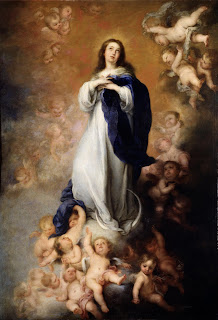Large letter postcard by the Curt Teich Co. Chicago, 1950. OCH185.
This year (2011) marks the centennial of the establishment of Naval Station Great Lakes.
A key player in the creation of the new naval training facility was Congressman George Foss (1863-1936) of northeastern Illinois. Foss spearheaded the idea of a naval training station on the Great Lakes to Commander Hawley, U.S.N. in 1902. Hawley spoke highly of the number and quality of recruits from the Midwest.
That same year a Naval Appropriations Bill was passed, appointing a board to select a suitable Great Lakes location for the training station. At least 36 sites were considered. By 1904, the fight in Congress had become brutal, despite the number of locations being narrowed down to four—Lake Bluff (North Chicago), Racine, WI, Milwaukee, WI and Muskegon, MI. Eventually a provision was drafted to give the President of the United States authority over the appointed board, bypassing Congressional arguments.
In the end, it was Foss who played a pivotal role in locating the training station. Foss realized that the purchase price of $1,000 per acre for the North Chicago site was the chief objection. He enlisted the aid of the Commercial Club of Chicago (the same group that in 1887 presented Fort Sheridan to the U.S. Army) and got the Club to subscribe more than $100,000 for the purchase. The Commercial Club offered the government over 160 acres free of charge. The board then recommended the North Chicago site, President Roosevelt approved it, and construction began in 1905.
Postcard of Administration Building (Building 1), circa 1918. Dunn Museum M-86.1.316
Renowned Chicago architect, Jarvis Hunt (1863-1941), was commissioned to design the original 39 buildings, built between 1905-1911 at a cost of $3.5 million. One of the landmarks is Building 1, also known as the Clock Tower or Administration building. Completed in 1911, the building is made of red brick and has a tower that stands 300 feet over the third floor of the building.
In January 1917, there were 618 sailors in training at Great Lakes. By that August, with the United States' involvement in World War I, the number of sailors grew to 50,000. A tent city and temporary buildings were built to accommodate this swell in numbers, and the facility expanded from 167 acres to over 1,200.
Postcard "Learning to Lower a Boat," Great Lakes, circa 1918. Dunn Museum 95.20.1
The first recruit, Ordinary Seaman Joseph W. Gregg (1893-1966), arrived at Great Lakes on July 1, 1911. Gregg was from Indiana and served in the U.S. Navy from 1911 to 1914. He is buried at U.S. Naval Cemetery, Great Lakes.
Postcard "Sham Battle with Tank in Action" at Great Lakes, circa 1915. Dunn Museum, Fort Sheridan Collection 92.24.274
In January 1917, there were 618 sailors in training at Great Lakes. By that August, with the United States' involvement in World War I, the number of sailors grew to 50,000. A tent city and temporary buildings were built to accommodate this swell in numbers, and the facility expanded from 167 acres to over 1,200.
During the World War I, Great Lakes became the largest training station in the U.S., graduating 100,000 men. Trainees included Waukeganite and Hollywood great Jack Benny, along with Hollywood notables Spencer Tracy and Pat O’Brien. Football great and owner of the Chicago Bears, George Halas, Sr., also trained at Great Lakes.
John Philip Sousa and the Great Lakes Band at Great Lakes, circa 1918.
Also during World War I, famous American bandleader, John Philip Sousa (1854-1932), was stationed at Great Lakes.
In 1917, at the height of his career and in support of the war effort, Sousa assumed the musical directorship of the Great Lakes Band. “The Naval Reserve March,” also known as “The Great Lakes March,” was written in 1918 during his tenure as the director of the Great Lakes band.
Photograph of Great Lakes Band on parade on Genesee Street, Waukegan, IL, circa 1930. Dunn Museum, Fort Sheridan Collection 92.24.1708.
The "Golden Thirteen," the first African American naval officers. Photographed by Vories Fisher for Life Magazine, 1944.
The first African American naval officers in U.S. history were commissioned at U.S. Naval Training Station, Great Lakes in 1944. At the time, there were 100,000 Black sailors in the U.S. Navy, and it was decided that Black officers were needed to lead and inspire the men.
Sixteen men successfully completed the officers' training course, but the Navy commissioned only 12 as officers and an additional man as a chief warrant officer. The Golden Thirteen were: Jesse Walter Arbor, Phillip G. Barnes, Samuel Edward Barnes, Dalton L. Baugh, Sr., George Clinton Cooper, Reginald E. Goodwin, James E. Hair, Charles Byrd Lear, Graham E. Martin, Dennis Denmark Nelson, John W. Reagan, Frank E. Sublett, Jr., William Sylvester White.
Master chief petty officer and master diver, Carl M. Brashear (1931-2006). Wikipedia.com. Public domain.
In 1948, Carl M. Brashear (1931-2006) joined the Navy and attended basic training at Naval Training Center Great Lakes from February to May. Years later, Brashear became the Navy's first African American Deep Sea Diver and Master Diver.
Today, Naval Station Great Lakes is the only training station for the U.S. Navy. All recruits go through this base and an average of 800 graduate each week.















































